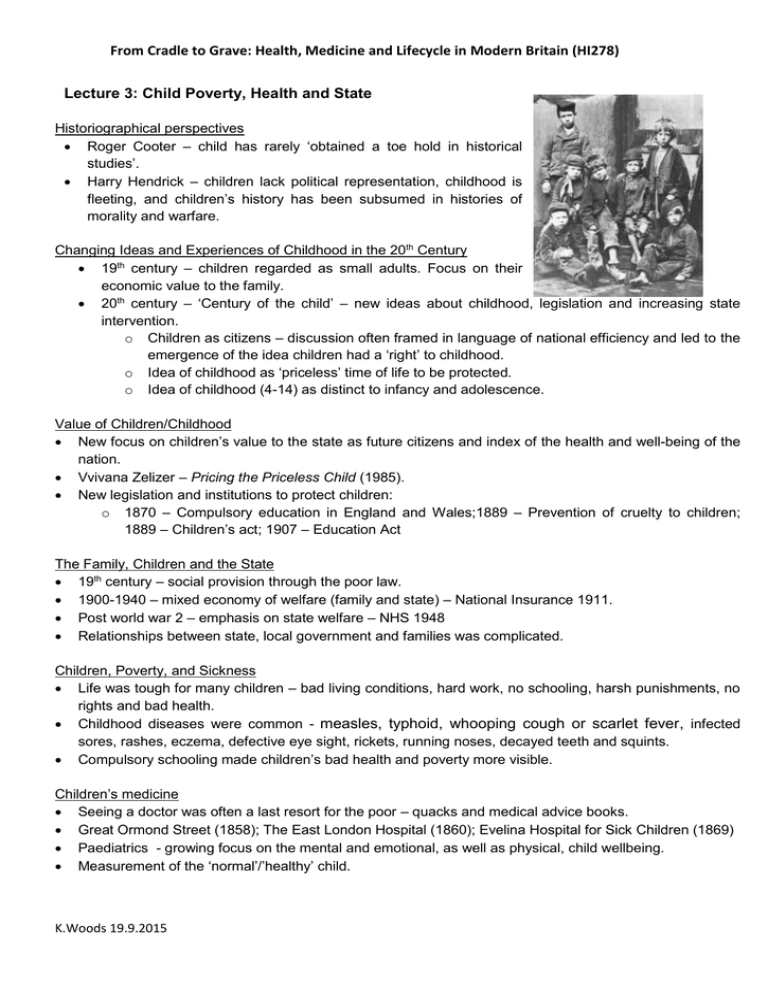From Cradle to Grave: Health, Medicine and Lifecycle in Modern... Lecture 3: Child Poverty, Health and State
advertisement

From Cradle to Grave: Health, Medicine and Lifecycle in Modern Britain (HI278) Lecture 3: Child Poverty, Health and State Historiographical perspectives Roger Cooter – child has rarely ‘obtained a toe hold in historical studies’. Harry Hendrick – children lack political representation, childhood is fleeting, and children’s history has been subsumed in histories of morality and warfare. Changing Ideas and Experiences of Childhood in the 20th Century 19th century – children regarded as small adults. Focus on their economic value to the family. 20th century – ‘Century of the child’ – new ideas about childhood, legislation and increasing state intervention. o Children as citizens – discussion often framed in language of national efficiency and led to the emergence of the idea children had a ‘right’ to childhood. o Idea of childhood as ‘priceless’ time of life to be protected. o Idea of childhood (4-14) as distinct to infancy and adolescence. Value of Children/Childhood New focus on children’s value to the state as future citizens and index of the health and well-being of the nation. Vvivana Zelizer – Pricing the Priceless Child (1985). New legislation and institutions to protect children: o 1870 – Compulsory education in England and Wales;1889 – Prevention of cruelty to children; 1889 – Children’s act; 1907 – Education Act The Family, Children and the State 19th century – social provision through the poor law. 1900-1940 – mixed economy of welfare (family and state) – National Insurance 1911. Post world war 2 – emphasis on state welfare – NHS 1948 Relationships between state, local government and families was complicated. Children, Poverty, and Sickness Life was tough for many children – bad living conditions, hard work, no schooling, harsh punishments, no rights and bad health. Childhood diseases were common - measles, typhoid, whooping cough or scarlet fever, infected sores, rashes, eczema, defective eye sight, rickets, running noses, decayed teeth and squints. Compulsory schooling made children’s bad health and poverty more visible. Children’s medicine Seeing a doctor was often a last resort for the poor – quacks and medical advice books. Great Ormond Street (1858); The East London Hospital (1860); Evelina Hospital for Sick Children (1869) Paediatrics - growing focus on the mental and emotional, as well as physical, child wellbeing. Measurement of the ‘normal’/’healthy’ child. K.Woods 19.9.2015





